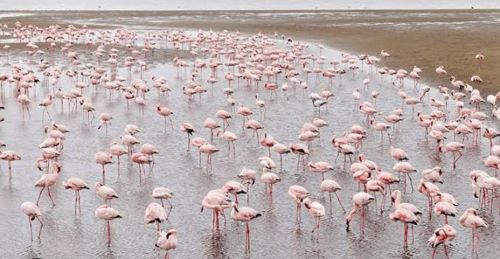By Frank Meke, Renowned tourism writer
Namibia is 32 years old. The founding President, Dr. Sam Nujomo, was all I could possibly remember of this nation sharing borders with South Africa, Angola, Botswana and the Atlantic waters.
Its national airline, Air Namibia, collapsed years ago, and the government sees no need to revive it, at least for the sake of tourism, in which God gifted them endlessly.
Well, Air Angola feasts on the growing traffic, even though the onboard service begs for overhauling. From Lagos to Luanda, Angola, is three hours and another three hours to Windhoek, capital of Namibia.
Significantly, one must brace for flight delays in Luanda, gradually wearing the face of a hub, connecting Portugal, Dubai, Johannesburg, Cape Town, Maputo and many other countries. Getting to Windhoek with its modest but hugely clean and attractive airport gives a sense of joy.
Windhoek is like a beautiful lady. She’s very shy but flirtingly inviting, and at a point I wondered where the people were. A five-hour drive to the Atlantic frontiers of Swakopmund left me breathless. Can one fall in love at the first meeting with an eternal city? With nature, all things are possible.
It was five O’clock in the evening, and our guide to the city of Swakopmund knew I was up to a mission. The mountainous formations reminded me of the same protective hold of the mountains stretching through Taraba, Benue to Obudu in Cross River State of Nigeria.
The hilly rock formations here are muscular, arrogant, black, and unending. From the sky, the desert ecosystem is unmistakable and deceptive. I had thought that the weather was going to fry me, so geography and weather reports lied to me?
No, I was just overconfident like Mungo Park and had thought earthly terrains were easy wins. No need to tell you that my research was poor or that I had taken South Africa, so Namibia would follow me easily to the marriage altar of travel.
The well paved roads were romantic. I was tempted to change seating position with the driver, but I was handicapped by law and the driving ecosystem. The cars came with left steerings. I sneered to no one in particular.
Did I tell you the cold was my first challenge just as mosquitoes dealt with early European explorers of Africa? The merciless cold chopped up my enthusiasm.
I went dead silent, gripped my body in self-consolatory evangelism, yet with one eye taking up breathtaking sceneries before me.
I did click over 50 photo shots of the roads and the Edenic desert shrubs, the growing farming communities, and luxury estates in the middle of nowhere.
In Swakopmund at last, I had thought my bed would provide me comfort. The bed was cold, and a hot shower was not hot enough to restore my blood flow. A lot of things went through my mind, and I remembered never to have given up in the face of travel challenges.
The fifth Africa Youths in Tourism Innovation Summit took place here, in Swakopmund, and Nigeria had three brilliant youthful tech entrepreneurs on the list.
Susan Akporiaye, president, National Association of Nigeria Travel Agencies, and CEO of Topaz Travels, invested in this dream and the thought of why we were here put the cold to flight.
After two days of intensive conferencing on the future of African youths in tourism, the Nigerian team, led by Akporiaye decided to discover Swakopmund.
Before now, I was wondering where the people of Namibia were, even as the cold became annoyingly furious and ferocious. Swakopmund looks like a beautiful garrison, a heavenly prison resort with inmates buffeted by nature yet illusionary confounding.
And until we went out to hunt for authentic local African food, then I knew that Swakopmund was a home for the living and comes to life in its own cultural definition.
Signs that the Germans once ran the place abound significantly.
Some people who are in politics would frown at certain notorious historical separatism enthroned in the 18th century when the Germans discovered and ruled the Namib region, the shadows of that partition still remain like scars.
At the Heninrich Hafeni restaurant in Swakopmund, African food and culture tell a story, an expression and experience that will possibly take back Swakopmund and make it a home for all that love Africa, the Namibian people and their very interesting but untold history.
*Published with permission from the author. First published by the Sun Newspaper.


